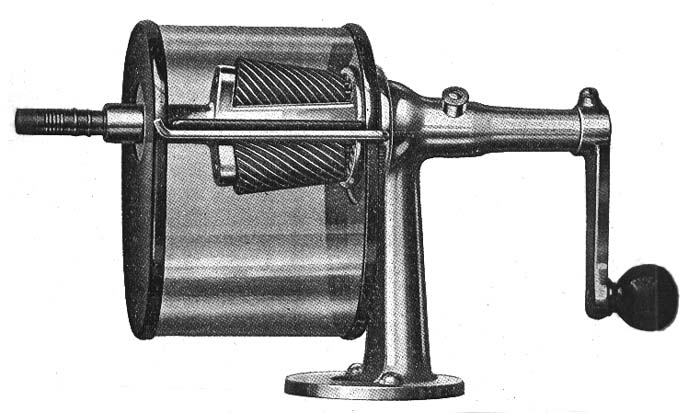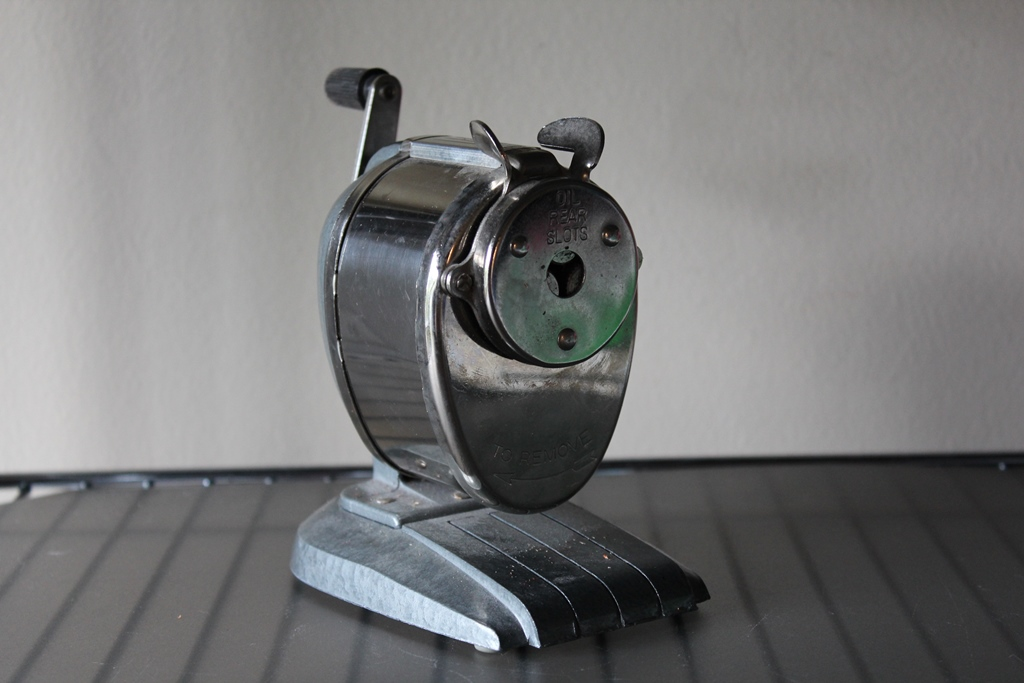Few memories take us back to the simpler times of school days like the click and crank of an old-fashioned pencil sharpener. For many of us, the daily ritual of walking to the sharpener by the classroom door, adjusting the settings for the right pencil slot, and turning the crank to achieve the perfect point is etched in our minds. While technology has changed drastically since then, finding a vintage Boston KS-model pencil sharpener at a thrift shop can send a wave of nostalgia rushing back. But what’s the story behind this iconic schoolroom fixture?
The Daily Walk to the Pencil Sharpener: A Childhood Memory

If you attended school before the rise of electric sharpeners and mechanical pencils, chances are you remember the twice-daily trek to the pencil sharpener. Back then, the classroom sharpener was often a Boston KS-model, mounted near the door for easy access. You’d select the correct hole size from the eight available options, though most of us used the standard slot.
There was something satisfying about cranking the handle, feeling the resistance as the blade shaved your pencil to a perfect point. And then, every few days, someone would be tasked with the responsibility of emptying the pencil shavings into the trash—an unsung but necessary duty in the classroom.
A Treasure Found at Goodwill: Boston KS-Model Pencil Sharpener
Years later, when I stumbled upon a Boston KS-model pencil sharpener at a local Goodwill, those old memories came flooding back. I couldn’t resist picking it up for a mere $3, knowing that it would provide weeks of nostalgia, even if only as a decorative piece. The sharpener, with its sturdy metal body, had eight slots for pencils and two holes for securing it to a wall or desk. This design was a fixture in classrooms across America, particularly in the mid-20th century.
The Origins of the Boston Pencil Sharpener Company
Founded in 1899, the Boston Pencil Sharpener Company became a household name in the world of school supplies. Back then, pencil sharpening was a tedious task, often done with a knife, which wasted both time and pencil lead. The invention of mechanical sharpeners, especially Boston’s designs, changed the game.
In 1913, the Boston Pencil Pointer, an early model sharpener, was selling for around $6, which was quite an investment for the time. But its efficiency in sharpening pencils compared to the old-fashioned knife method made it a must-have for schools and offices. The Boston Pencil Pointer saved lead and made the art of sharpening precise and convenient.
Boston Pencil Sharpeners in Every Classroom
By the time I entered elementary school in the early 2000s, most classrooms were equipped with a Boston KS-model sharpener. These sharpeners, often mounted on a wall or desk, were built to last, with sturdy metal mechanisms that could withstand years of constant use. The joy of hand-cranking a pencil sharpener was a shared experience among generations of students.
But, as technology evolved, by middle school, electric sharpeners and mechanical pencils began to take over. Electric sharpeners were fast, but they were noisy and disruptive during quiet classroom moments. The trusty Boston KS-model sharpener, while slower, had a charm that modern sharpeners couldn’t replicate.
The Evolution of the Boston Sharpener Line

The Boston Pencil Sharpener Company’s long-standing legacy didn’t end with its original founders. In 1925, the company was acquired by Hunt Manufacturing Company, which continued producing the classic sharpeners under the Boston name. Later, the brand was acquired by X-ACTO, a well-known name in precision tools. While X-ACTO still manufactures sharpeners in the Boston style, the product has changed over the years.
The original sharpeners were known for their durability and precision, traits that some historians argue are lacking in the modern versions. Although X-ACTO still produces metal, hand-cranked Boston-style sharpeners today, they are now made in China, and many believe that the mechanisms don’t quite have the same integrity as the original Boston Pencil Sharpener Company models.
The Decline of Hand-Cranked Pencil Sharpeners
With the rise of mechanical pencils and the convenience of electric sharpeners, hand-cranked models began to fall out of favor in schools. By the time I reached middle school, electric sharpeners were the norm. They were fast, but they lacked the tactile satisfaction of the old-fashioned crank models.
However, for those who long for a bit of nostalgia, or for collectors, finding an old Boston KS-model sharpener is like uncovering a piece of history. These sharpeners were designed to last, and many still work perfectly today, even after decades of use.
Why Boston Sharpeners Hold a Special Place in Our Hearts

There’s something special about the Boston KS-model pencil sharpener. It’s more than just a tool—it’s a reminder of simpler times, when sharpening a pencil was part of the daily rhythm of classroom life. Today, when we’re surrounded by digital devices and instant solutions, the slow, deliberate act of sharpening a pencil by hand feels almost meditative.
For many of us, the Boston sharpener represents a connection to our school days, a time when things weren’t so fast-paced. It’s a reminder that some tools, like the hand-cranked sharpener, were built to last and built to do their job well.
Conclusion: The Timeless Appeal of the Boston KS-Model Sharpener
The Boston KS-model pencil sharpener is more than just a tool for sharpening pencils. It’s a piece of history, a symbol of a time when things were made to last, and a reminder of the joy of simple, everyday tasks. While electric sharpeners and mechanical pencils have taken over, there’s something special about the feel of a hand-cranked sharpener.
If you ever come across one of these vintage treasures at a thrift store, don’t hesitate to pick it up. Whether you plan to use it or simply keep it as a nostalgic reminder of your school days, the Boston KS-model sharpener is a testament to quality craftsmanship and timeless design. After all, some things never go out of style.


